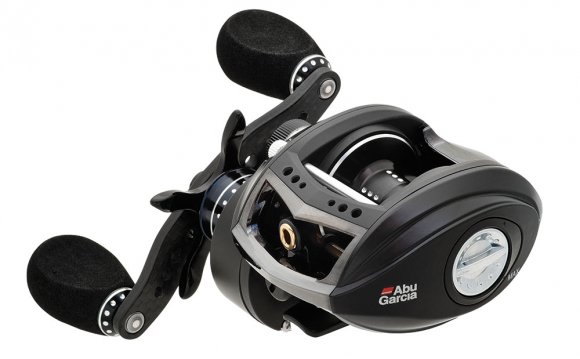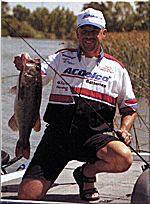
How can you know which bass fly fishing rod to use for what?
By Mark Lassagne

The best fishing rod can certainly make you a significantly better angler. Many fishermen tend to be not aware your fishing rod is one of the most crucial resources for catching and landing bass. What number of times maybe you have gone away and only arrived half of the seafood that bite? Think about when you thought it was a bite but were not rather sure? What number of bites can you miss for each outing? Can you make precise casts along with your rod? They're only a few items that having the right pole can help you with.
I'm often asked, "how can you understand which pole for just what?" It is just like the game of golf. Each chance needs an alternate club. In bass angling, every type of lure needs another type of form of pole. This is a good someone to tell your spouse. Choosing suitable rod can be confusing to put it mildly: fiberglass or graphite, quickly or slow, hefty or light. Hopefully, we can lose some light on the subject and help
The fundamental rod is made of either fiberglass or graphite. This product is woven into exactly what appears like sheets of cloth. The finer the weave, the faster the action. The weave is calculated in modulus. Fiberglass rods have a modulus of 6 to 13 million and graphite rods come from 33- to 60-million modulus (ie: IM6 has 33, 000, 000 and IM7 has 42, 000, 000).
Increased modulus pole would be stiffer, quicker, less heavy and more painful and sensitive, but can also be even more brittle, much like the distinction between Plexiglas and cup. All rod blanks are not developed equal. A quality blank will be lightweight and engineered for a particular action. Rod manufacturers spend much time to achieve the right action.
The rod elements tend to be equally as crucial given that rod blank itself. The pole handle is made of various sorts of materials particularly timber, cork or foam. The handle should match your hand comfortably and still be fast adequate to carry sensitiveness. The reel chair is made of a sturdy composite product and fit all significant labels of reels solidly. A reel chair with a cut out which allows the pole blank is sensed because of the hand will provide the angler greater susceptibility.
The guides are probably one of the most important aspects of the pole - and that can be the costliest. A low-quality guide will destroy even the most readily useful blank. A high-quality, low-profile, lightweight guide, increase susceptibility and casting length. When looking at helpful information, make sure the ceramic band is rounded where the range moves through. Additionally, the ceramic must be fused into the stainless-steel guide frame. A rod with Fuji guides, utilizing Fuji's brand new guide concept, is a good choice. A complete description associated with brand-new guide concept can be bought at www.fujitackle.com.
After a short look at the rod products and elements, there is another essential factor to consider that isn't noticeable by searching. You should know in the event that rod builder makes use of a spline to align the guides. The spline is a lot like a seam in the rod blank making one side of the rod stiffer then your other. If maker failed to make use of a spline to line up the guides, each pole will have a different sort of action despite the fact that these were the same component figures.
Assuming the company made use of the spline to fall into line the guides you have to after that look at the guides on their own. Guides are made to deal with specific line sizes. Guides should always be suitable to the line size score when it comes to pole. Each length pole should have a specific few guides. Including, a 7-foot rod should have nine guides, including the top. Guides can be found in two designs, single-foot and dual foot. Your own feet are exactly what connects towards pole. Double base guides tend to be more powerful however they are a little thicker and also you loose a tiny bit of flex when you look at the pole. Single-foot guides are lighter but they are much less powerful as double footguides. Although single foot guides are not as powerful, they are going to work fine for many bass fishing rods.
Numerous brand-new fishing rods have actually a variety of both guide kinds, utilizing dual base guides close to the handle and single foot guides nearby the tip in which the pole flexes more.
Susceptibility the most critical indicators when choosing a pole. With a painful and sensitive rod you may, eventually, have the ability to decipher what exactly is taking place together with your bait. How many times features something happened to your bait and you also couldn't tell if it was a bite or perhaps not? Graphite fishing rods are often more sensitive than fiberglass rods but there have been developments in technology having made some fiberglass rods as delicate as much graphite rods.
Buzzbaits and spinnerbaits:
With buzzbaits and spinnerbaits, you will be casting continually, so a lightweight pole is important. Sensitivity normally essential because often the fish will bump the blades ahead of striking. A 6-foot rod will give a little more casting accuracy, but a 7-foot rod provides you with more hooksetting power, control and casting length. A fiberglass rod can give the seafood time to inhale the bait before you set the hook. These baits utilize an individual hook, enabling you to place more stress on the seafood during fight so a medium-action pole will allow sufficient capacity to land the fish. The end needs-be flexible enough to throw the appeal accurately.
Most readily useful rod: Lightweight, painful and sensitive, 6 1/2-foot- to 7-foot pole with a moderate activity and a medium/soft tip.
Crankbaits and topwater lures:
As spinnerbaits, crankbaits and topwater lures need constant casting, so fat is an important factor. Sensitiveness can be crucial, not really much for topwater however for cranking. After you get accustomed to the bait you're utilizing, a sensitive pole can help you know what sort of construction the bait is calling. In the event that seafood are on a difficult clay base and also you know your bait is looking in to the mud then you definitely know you are in the wrong area.
A 7-foot pole is wonderful for length and casting bigger baits. A 6- to 6 1/2-foot pole is more precise, so that you have to adjust the rod size into form of fishing you are doing. Crankbait and topwater rods must certanly be made from fiberglass, that allows the fish time for you inhale the bait just before set the hook. The treble hooks on crankbaits and topwater lures can dislodge in the event that you use way too much stress. The additional flex of a fiberglass pole could keep the hooks from coming unbuttoned.
A medium action rod is usually fine so long as the rod has enough backbone to get a good hookset and flexible enough to cast the lure you are using. A 1/8-ounce lure needs a light tip while a 314-ounce lure requires a medium tip.
Most useful pole: A lightweight, painful and sensitive, 6- to 7-foot fiberglass rod with a moderate action tip or a light action tip, with respect to the weight of appeal.
RELATED VIDEO












